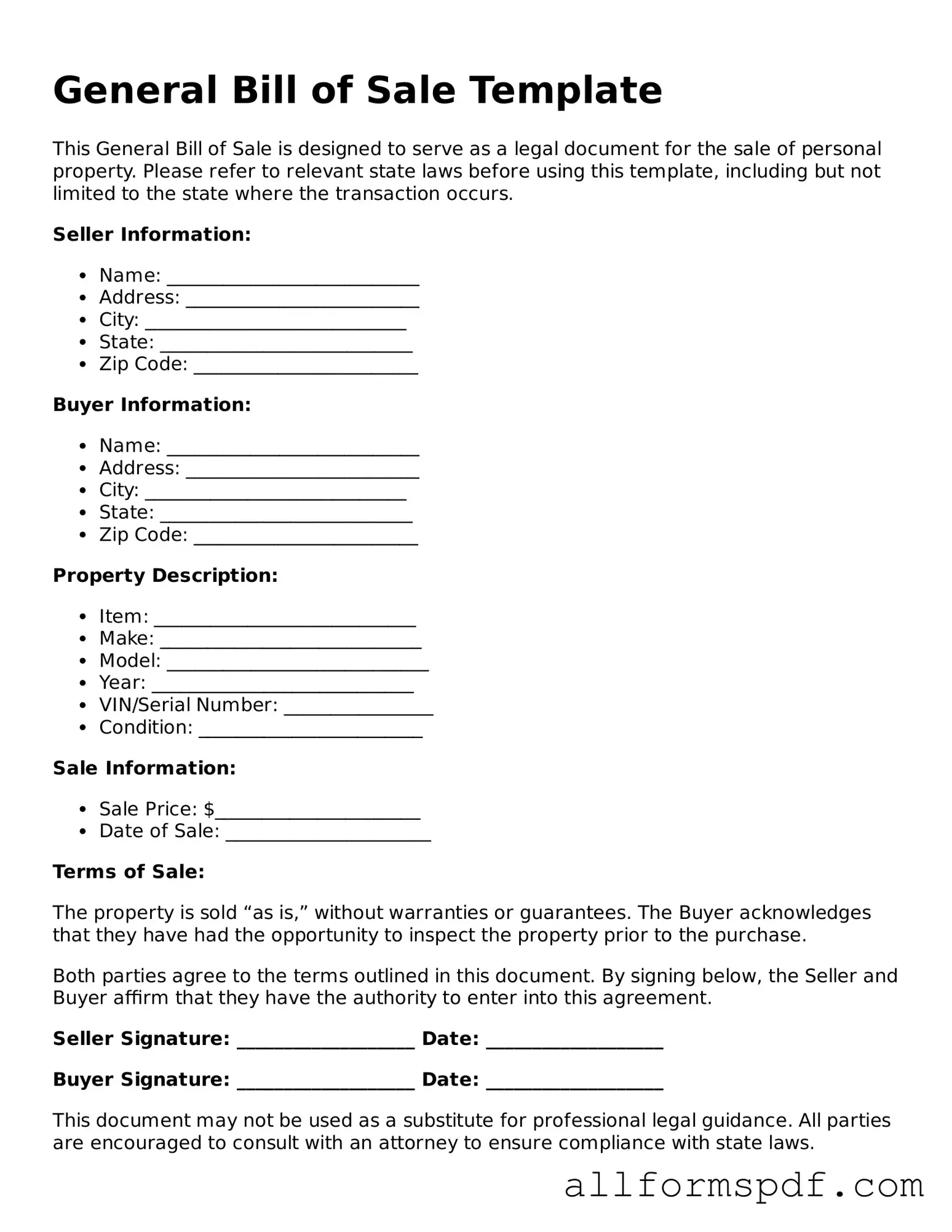General Bill of Sale - Usage Guidelines
Once you have gathered all necessary information, you can proceed to fill out the General Bill of Sale form. This document will help you record the transaction details clearly and protect both parties involved. Follow the steps below to ensure accuracy and completeness.
- Begin by entering the date of the sale at the top of the form.
- Next, provide the full names and addresses of both the seller and the buyer. Ensure that the information is accurate to avoid future complications.
- Clearly describe the item being sold. Include details such as the make, model, year, and any identifying numbers like a VIN for vehicles.
- State the sale price of the item. This should be the total amount agreed upon by both parties.
- Include any terms of the sale, such as whether the item is sold "as-is" or if any warranties are provided.
- Both the seller and buyer should sign and date the form at the bottom. This indicates that both parties agree to the terms outlined.
After completing the form, make copies for both the seller and the buyer. This ensures that each party has a record of the transaction for future reference.
